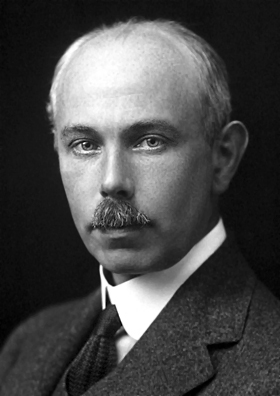
Francis William Aston (1877 – 1945)
On September 1, 1877, English chemist, physicist, and Nobel Laureate Francis William Aston was born. Aston won the 1922 Nobel Prize in Chemistry for his discovery, by means of his mass spectrograph, of isotopes, in a large number of non-radioactive elements, and for his enunciation of the whole number rule.
Francis William Aston – Early Years
Francis William Aston was born in Harborne, now part of Birmingham, UK, as the third child and second son of William Aston and Fanny Charlotte Hollis. He was educated at the Harborne Vicarage School and later Mason College and studied chemistry under Frankland and Tilden, and Physics under John Henry Poynting. From 1896 on he conducted additional research on organic chemistry in a private laboratory at his father’s house. In 1898, Aston won a Foster Scholarship, which enabled him to work on the optical properties of tartaric acid derivatives. His research results were published in 1901. Aston left the academic career path for some years and became chemist in the laboratory of a brewery. However, as Aston was still quite enthusiastic about physics as well, he designed and constructed new types of pumps for evacuating vessels. He switched his interest towards gas discharge phenomena in evacuated tubes.
Dark Space
In 1903, Francis William Aston continued his studies at Birmingham University in order to work on the properties of the Crookes Dark Space in discharge tubes. During this work, during a glow discharge directly at the cathode in front of the first cathode light seam, he discovered a wafer-thin, dark layer, which was named after him “Aston Dark Space“. Aston began working at the Cavendish Laboratory, Cambridge, following an invitation of Sir J.J.Thomson to become his assistant on studies of positive rays.[5] Around that time, Francis William Aston was able to find evidence for the existence of two isotopes of the inert gas neon. During World War I, Aston worked at the Royal Aircraft Establishment, Farnborough, where he studied the effect of atmospheric conditions on aeroplane fabrics and dopes.
The Mass Spectrometer
After the war, Aston continued at Cavendish Laboratory to work on the separation of the isotopes of neon. During his research already in 1901, he developed a method of electromagnetic focusing of particle beams (electromagnetic mass spectrograph), which led to the development of the first mass spectrometer (1918). The device enabled to utilize the slight differences in mass of the two isotopes to effect their separation due to electromagnetic focusing. After further extending this principle to other chemical elements, Francis William Aston discovered 212 of the naturally occurring isotopes. Aston was then able to formulate the Whole Number Rule.

Replica of Aston’s third mass spectrometer
The Whole Number Rule
This rule (Whole Number Rule), after which the “Astonian rule” or”(Astonian) isotope rule” is named, states: Chemical elements with an odd ordinal number never have more than two stable isotopes, whereas those with an even ordinal number often have significantly more. Aston explained this on the oxygen isotope 16O: “At a defined mass of the oxygen isotope [16O] all other isotopes [of oxygen] have masses that are quite close to integers.” Continuing his research, Francis Aston managed to improve his device for precision and refinement, and the scientist observed the deviations from the Whole Number Rule which became important in the field of atomic energy. His work was published in the Proceedings of the Royal Society and in the Philosophical Magazine.
Later Years
As early as 1919 he postulated the extremely high-energy fusion of hydrogen to helium. In 1920, Francis William Aston was elected to a Fellowship at Trinity College and received the Mackenzie Davidson Medal of the Röntgen Society. He was made a Fellow of the Royal Society and was awarded the Society’s Hughes Medal. In 1922, he received the Nobel Prize in Chemistry “for his discovery, by means of his mass spectrograph, of isotopes, in a large number of non-radioactive elements, and for his enunciation of the whole-number rule“.
Francis William Aston died on November 20, 1945, at age 68.
James S. Nowick, Lecture 4. Mass Spectrometry: Theory, Instrumentation, and Techniques [8]
References and Further Reading:
- [1] Francis William Aston Biographical at the Nobel Prize Foundation Webpage
- [2] Francis William Aston Biographical at Cambridge
- [3] Francis William Aston At Britannica
- [4] Francis William Aston at Wikidata
- [5] J. J. Thomson and the Existence of the Electron, SciHi blog
- [6] Francis William Aston (1907). “Experiments on a New Cathode Dark Space in Helium and Hydrogen”. Proceedings of the Royal Society A. 80 (535): 45–49.
- [7] Francis William Aston (1911). “The Distribution of Electric Force in the Crookes Dark Space”. Proceedings of the Royal Society A. 84 (573): 526–535.
- [8] James S. Nowick, Lecture 4. Mass Spectrometry: Theory, Instrumentation, and Techniques, Organic Spectroscopy 2011, UCI Media @ youtube
- [9] Timeline for Francis William Aston, via Wikidata





